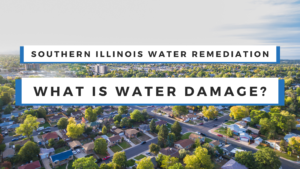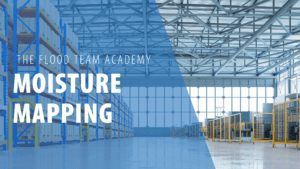If you’ve been following our blog we recently covered evaporation potential. Now we’re going to learn about air flow. Air flow uses our knowledge of evaporation potential to help us remove water safely and quickly. Getting the air to move in an area effected by water damage may seem like a simple thing to do, but we can create a maximum effect to get better air movement and faster drying.
We start by mapping the room. We take inventory of the shape and size of the room and the effected area. Then we use these measurements to set up our air vortex. Air movers need to be placed every 10 to 16 linear feet. If there are obtuse angles air movers need to be placed more frequently, and they must be placed in all effected areas. Once we get the air moving in a circular fashion the air flow needs to move the air to a new area. You can’t just have the air moving around the room, it needs a place to go. So we place specialty fans that then remove the air from the room. The fan types we use are called axial and laminar.
We know from our use of evaporation potential that by moving the air in an area effected by water damage we are removing the layer of evaporated water resting just above the liquid water. By moving that air we create a low vapor pressure area where more water can evaporate. Constantly moving this water vapor allows us to dry rooms faster and reduce secondary damages.
If your room has a category three water loss air flow may not be something that you think about. We use this a lot when we are removing clean water. If an area is damaged by category three water (sewage) then all contaminated materials must be removed. Just drying these areas will lead to secondary damages caused by mold and bacteria. Make sure your water damage professional is removing water safely and correctly.








